How to make gluten-free sourdough starter from scratch using gluten-free flour. Making your own sourdough starter is easier than you’d think! And yes, it works with gluten-free flour!
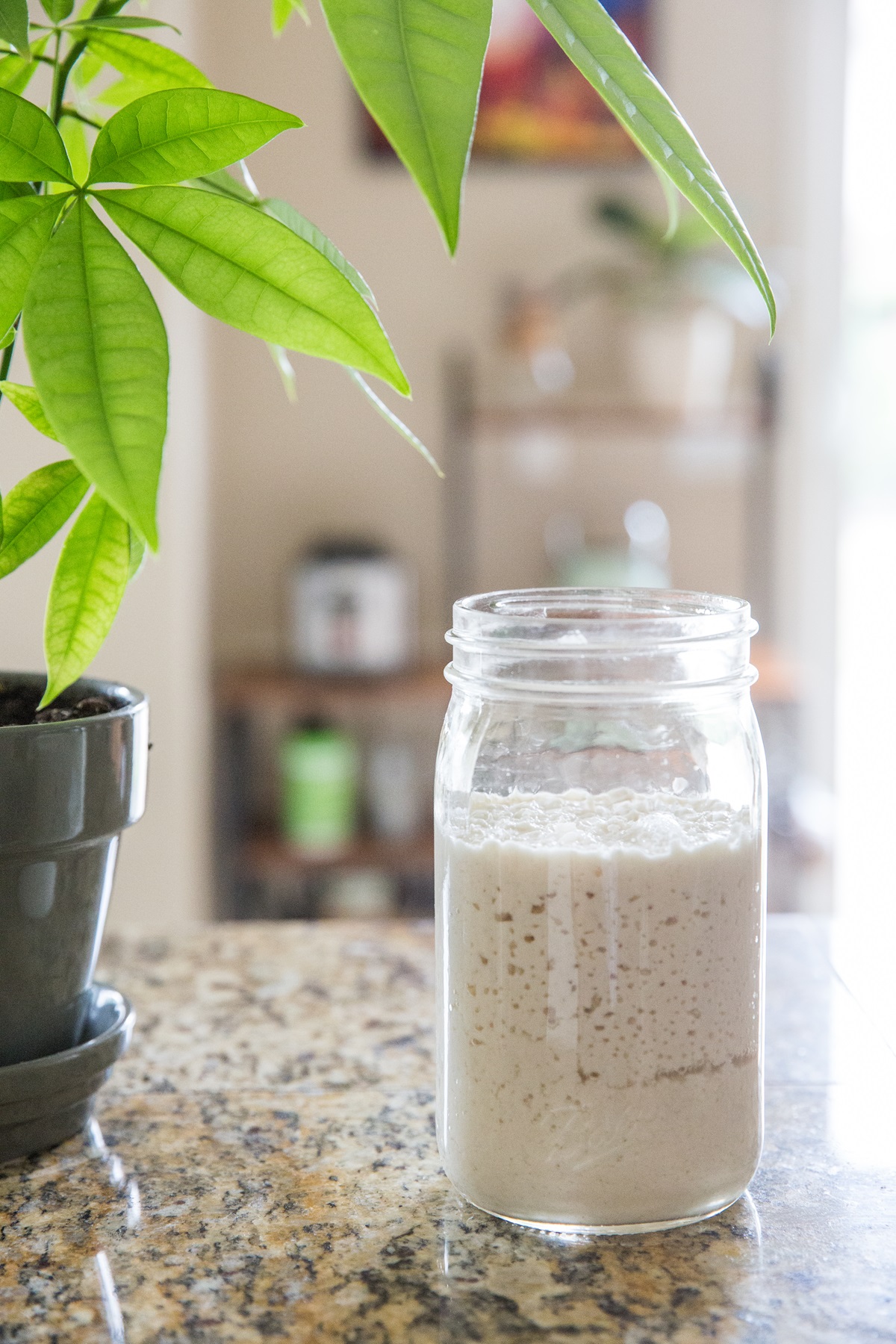
Oh hey!
Want to dive into the lovely land of sourdough but don’t know where to begin??
This post has you covered!
It is true that regular sourdough bread is lighter in gluten than regular (non-sourdough) bread, but those who are sensitive may still react to it, and those who are allergic should most definitely steer clear.
Thankfully, we can make sourdough starter using a store-bought gluten-free flour blend. Yes, it really does work!
If you have been a long-time follower, you may know I’m a bit of a geek when it comes to fermentation. I published a cookbook in 2015 focusing entirely on fermented beverages, called Delicious Probiotic Drinks.
It had been many moons since I started a new fermentation experiment, so once I decided to make my own gluten-free sourdough starter, I felt childlike elation. 😀
This post can be used as a guide to make your own gluten-free sourdough starter, know when it is ready to use, how to use it, and how to store it. I hope you find it helpful!
First things first, let’s discuss everything you need to make sourdough starter.
What you Need to Make Gluten-Free Sourdough Starter
Large Bowl or Jar – Choose a vessel that will allow your starter to grow up to 3 or 4 times its volume. Note that after feeding your starter every day, it will always grow. Keep this in mind when choosing the vessel in which your starter will live.
Quart sized wide-mouth mason jars are a great option.
I started in a mixing bowl and am currently using a large glass measuring cup. If possible, stick with the same vessel so as not to disrupt the fermentation process.
Gluten-Free Flour Blend – I use Bob’s Red Mill 1-to-1 Gluten-Free Baking Flour (not sponsored), but from what I have read, King Arthur’s Measure for Measure Gluten-Free Flour works well too.
DO NOTE! The amount of water you use may vary depending upon the flour you use. This is the only tricky part about making your starter (keep reading!).
For consistent results, avoid switching flours while you’re making your starter. Stick with the same flour so you don’t disrupt the microbiome of the starter – it will be fragile at first!
Water – that’s it. Just water. I use filtered water from my Berkey filter, and I do recommend using filtered water if at all possible.
Kitchen Towel – Use a kitchen towel or cheesecloth to cover the vessel you’re using to make the starter. This keeps any bugs out and also protects the starter from too much light (a little light is fine, but you don’t want to cook it with UV rays, know what I mean?
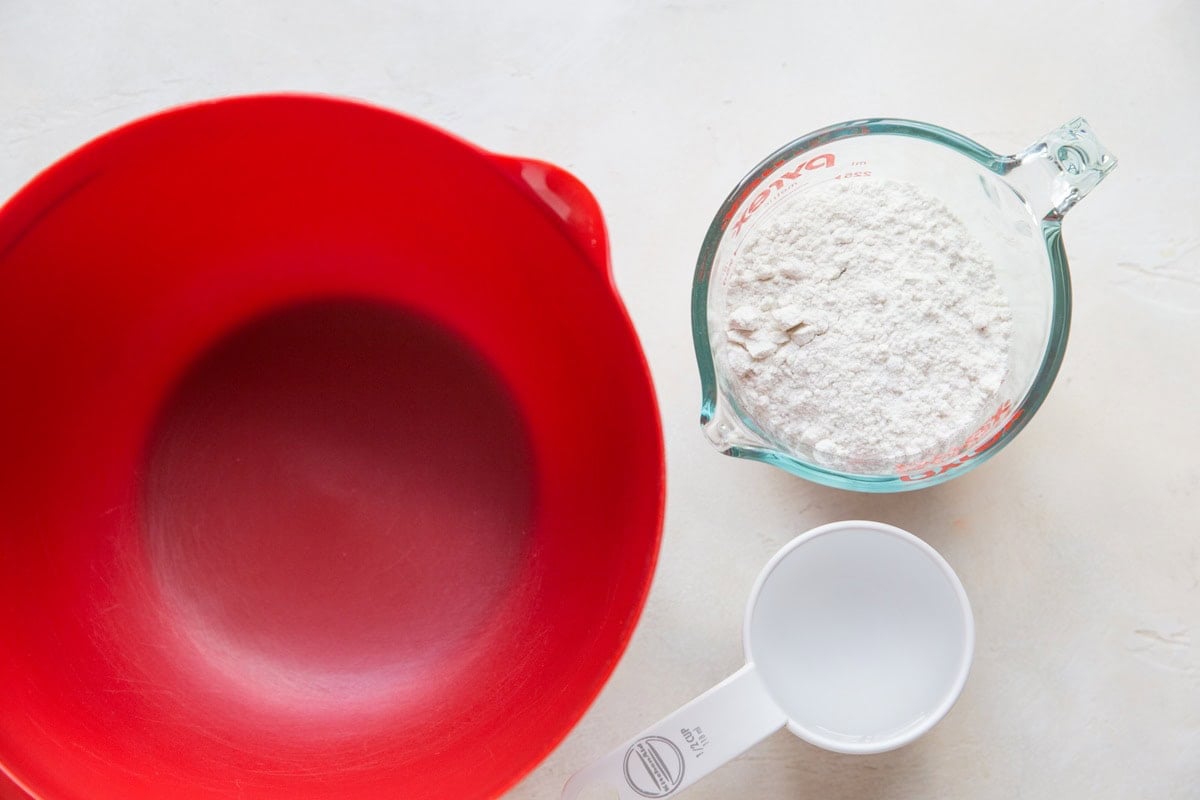
How to Make Gluten-Free Sourdough Starter:
Day 1: Combine 1 cup of gluten-free flour blend with 1 cup of water and stir well until all the clumps are out. Cover with a kitchen towel, and leave untouched overnight (preferably 18 to 24 hours).
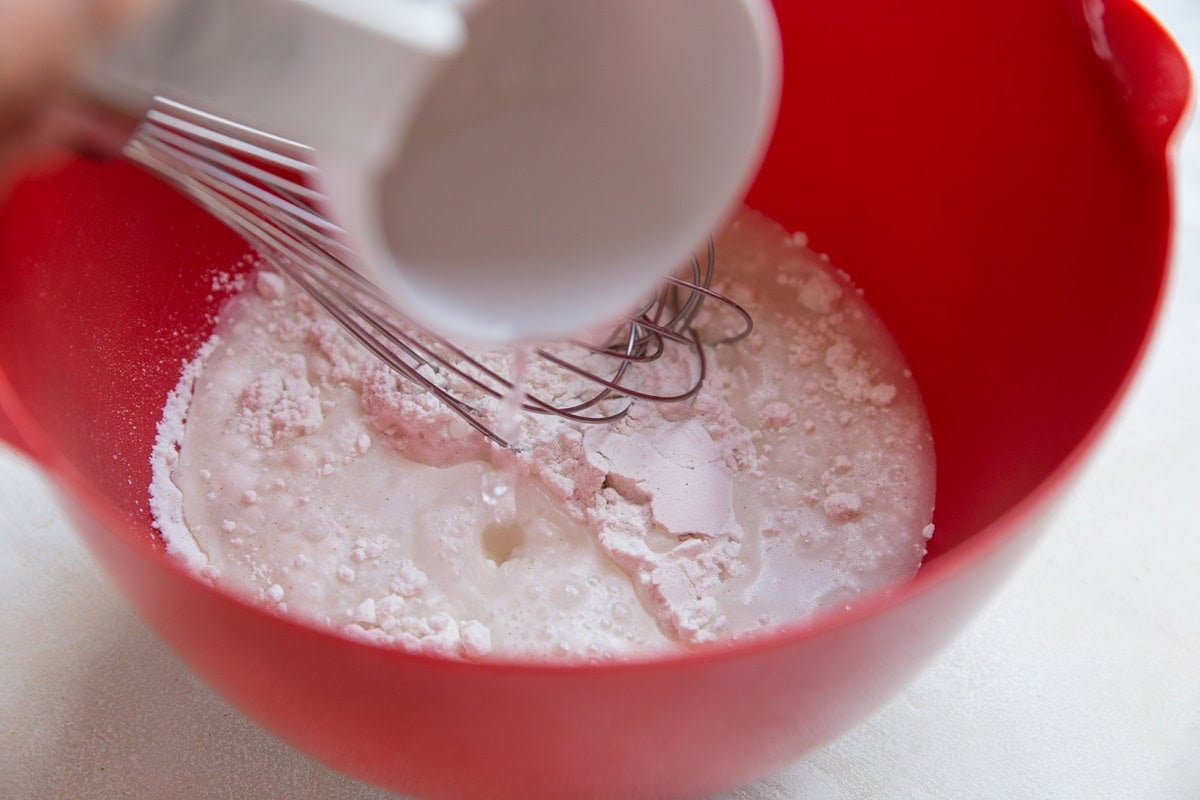
Day 2: Discard half of the starter (yes, throw it in the trash. Or if you don’t want to waste it, you can use it for a baking experiment). Add another 1 cup of flour and 1 cup water. If the starter is very thick like pizza dough, add more water until it is thinner.
You want it to be about the consistency of pancake batter. If it appears too thin, add more flour until that pancake batter-like consistency is reached.
Day 3 – 7 (and beyond): Each day, discard half of the starter and add a 1:1 flour to water ratio. This means you can continue adding 1 cup of flour and 1 cup of water, or you can decrease the measurement to ½ cup flour and ½ cup water.
Keep noting the consistency of the starter and add more or less water to get it to that slightly thick pancake batter consistency.
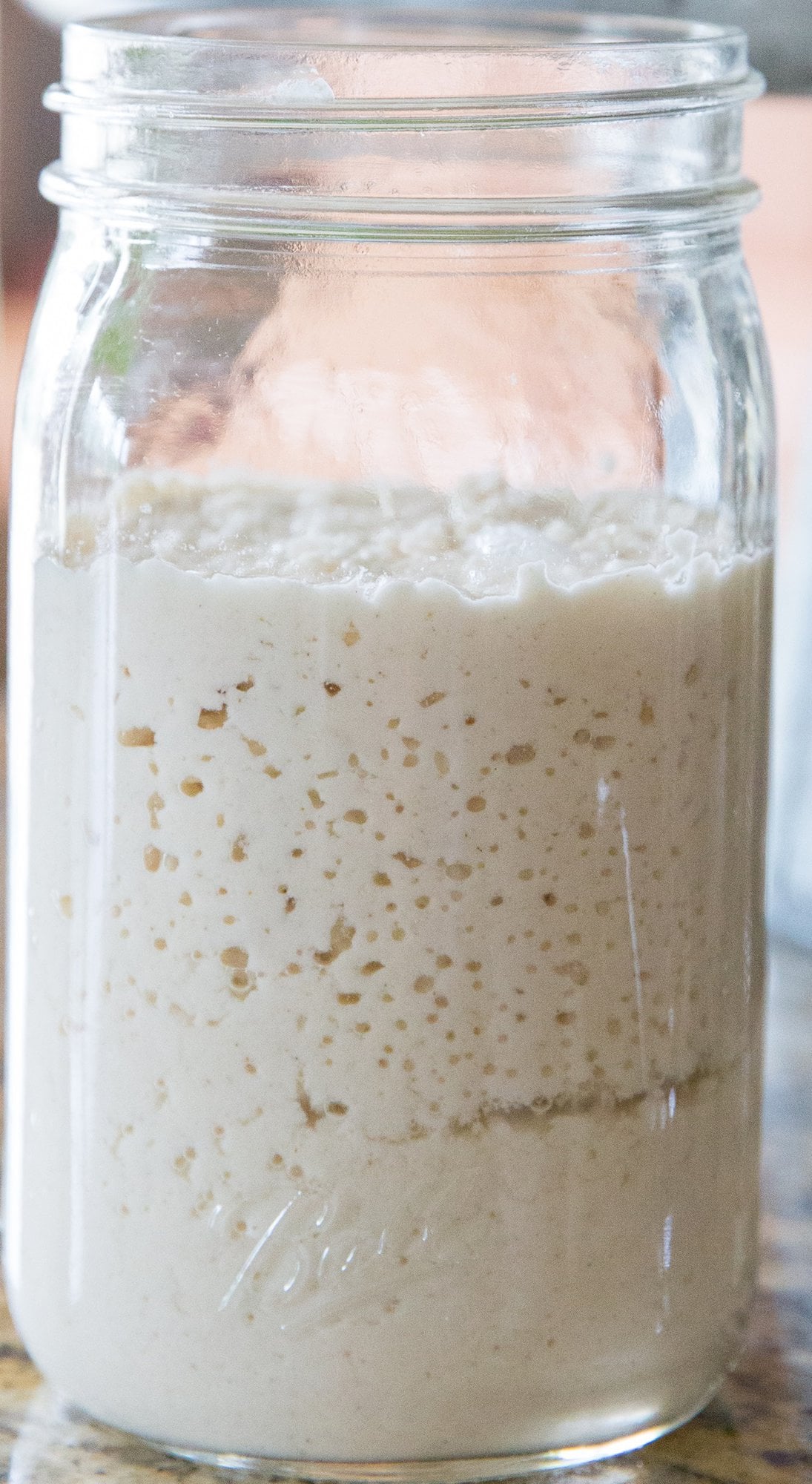
Sourdough Water to Flour Ratio
When using regular all-purpose flour, a 1:1 ratio is recommended to start and then the ratios change over time as your starter matures.
Similar to making regular sourdough starter, I found that I needed a 1 to 1 ratio of gluten-free flour to water, as the flour blend I use has similar absorbency to regular all-purpose flour.
King Arthur’s recipe for gluten-free sourdough starter specifies 1 cup of flour to 1/2 cup + 1 tablespoon of water to start out.
If you’re using King Arthur Measure for Measure Gluten-Free Flour, use that ratio and see where it lands you.
However, if you use Bob’s Red Mill’s 1-to-1 Baking Flour like me, you may need a larger ratio of water to flour.
Do note, humidity and elevation may play a role in your ratio!
Here in Reno, we are technically high elevation and it is dry AF here. It makes sense if you live in similar conditions you’ll need a higher ratio of water to flour than 1:1. If you live in a humid area and/or at sea level, 1:1 may be great!
Again, so long as your starter is the consistency of thick pancake batter, you’re good.
When is the Starter Ready to Use?
You can use your starter as soon as you witness signs of life. This means the starter will have grown 2 to 4 times its original volume and will have lots and lots of bubbles/air pockets.
These air pockets are a signal you have active, living bacteria and yeast and they’re literally breathing and reproducing!
You will also smell a pretty pronounced sour scent! It will smell like bread dough as you walk by your starter – this is another sign it is working!
My sourdough starter was ready to use on Day 4, but I let it go an additional day before putting it to use, just to be sure.
I had read sourdough starters sometimes become very active at the beginning and then seem to die off by day 3. If this is the case for you, don’t fret. Keep proceeding as normal to see if the starter bounces back.
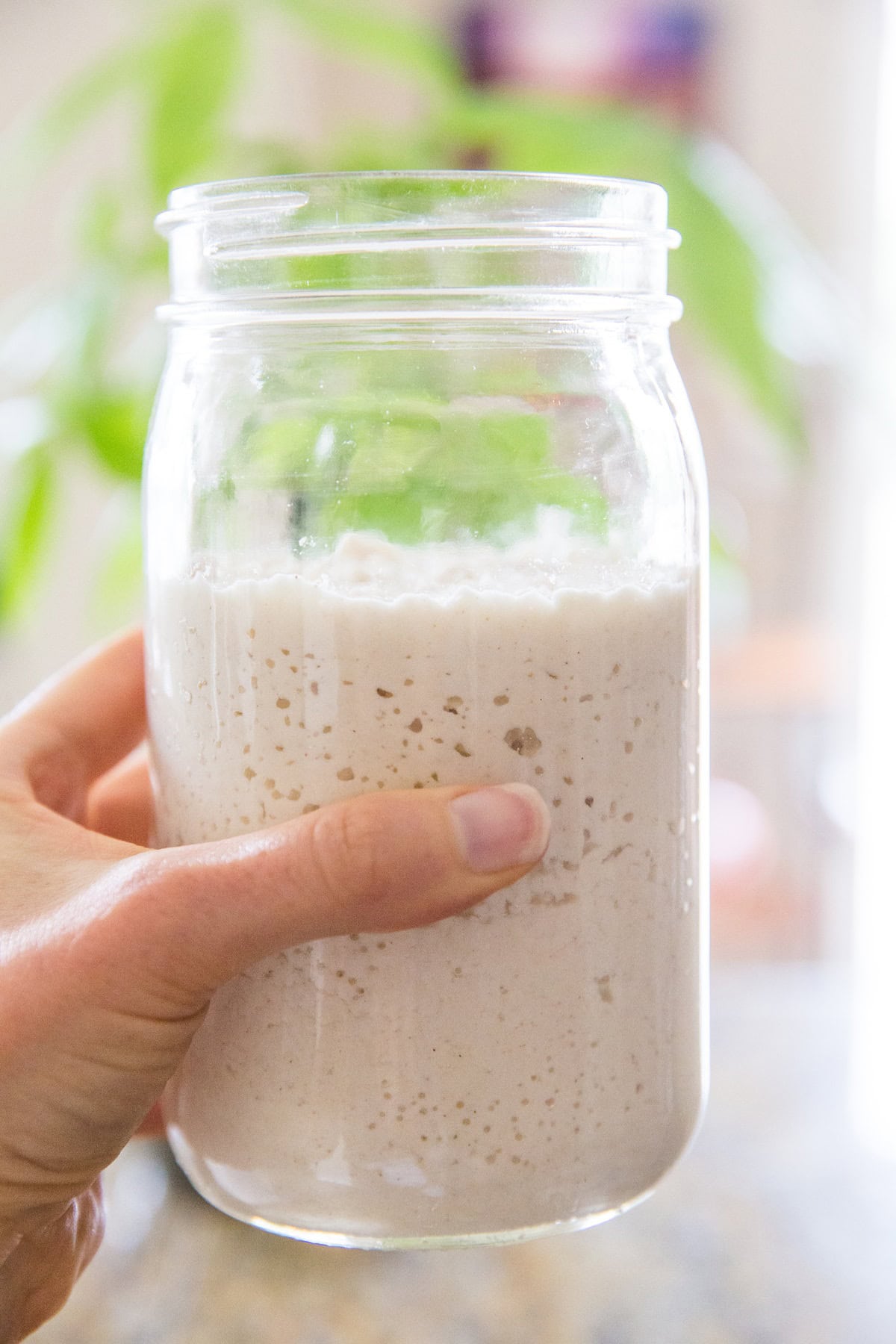
How Fermentation Works:
Across the board, the concept of fermentation is the same, but the inputs vary.
You need bacteria and/or yeast, liquid, and something to feed the bacteria and yeast.
For instance, when making yogurt, the lactose in the milk feeds the Lactobacillus bacteria strains, and the milk also serves as the liquid environment in which the bacteria live and reproduce.
In the case of sourdough starter, the bacteria and yeast are naturally occurring in the air (you may have heard the term, “native yeast.”).
We continuously feed the native yeast flour, which is jam packed with carbohydrate, and give it a nice moist warm environment to thrive.
The reason we continuously feed the culture is to ensure there is plenty of yeast for leavening our sourdough projects.
As long as you’re able to get a starter going, it becomes forgiving in terms of the amount and timing of feedings.
You can also allow the starter to go dormant by transferring it to a sealable container and refrigerating (I’d recommend using a jar with an airtight lid).
Best Household Temperature for Sourdough Starter.
70 to 80 degrees Fahrenheit. Yeast love temps in this range, so if your house stays warm, making a successful sourdough starter will be easy peasy.
Mine has been between 74 and 77, and my starter only took 2 days to show signs of life. By day 4, it was ready to use. If you keep your house cooler, no worries! It could still work, it just may take 5 to 7 days to show signs of life.
When in Doubt, Throw it Out:
If you see any mold at all – pink, white, green, brown, black, throw it out and start over.
There is absolutely no reason to risk it. Note that if you live in a humid area, you may need to keep a very watchful eye over the starter and begin keeping it in the refrigerator after a few days to avoid mold.
How to Use Sourdough Starter:
So you made a starter! Yaaay, congrats! Now what do you do? You have options:
- Use the daily discard in recipes, and continue feeding the starter
- Give some of the starter to family or friends, use starter for sourdough things, continue feeding starter
- Use starter for a while, get sick of sourdough, stick the starter in the refrigerator and allow it to go dormant,
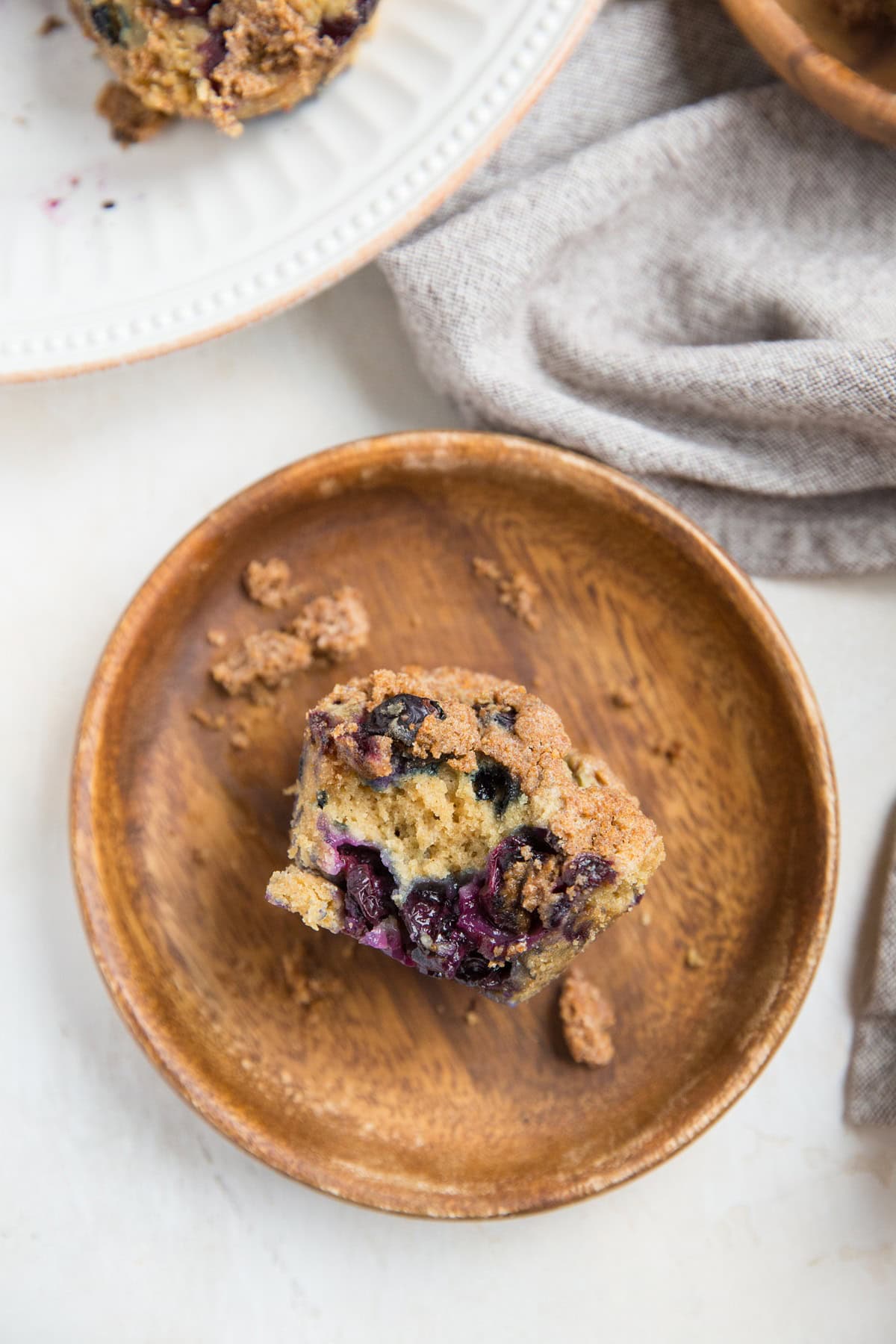
Gluten-Free Sourdough Recipes:
Here are some magnificent recipes using gluten-free sourdough starter!
- Gluten-Free Blueberry Sourdough Muffins
- Fluffy Gluten-Free Sourdough Pancakes
- Gluten-Free Sourdough Chocolate Cake
- Chocolate Chip Sourdough Waffles
- Gluten-Free Sourdough Bread Boule
- Gluten-Free Sourdough Bagels
- Sourdough Almond Flour Waffles
- Vegan Sourdough Banana Bread
How to Store Sourdough Starter:
If you’re continuing to use and feed the starter, just keep it in its original vessel.
When or if you decide it is time to take a hiatus, transfer it to a sealable glass jar and refrigerate until you are ready to start back up. If you’re keeping your starter in the refrigerator, be sure you allow it to come to room temperature before using it in a recipe.
Troubleshooting:
This is above my knowledge and experience, so if you’re having issues, go to A Beautiful Plate’s Sourdough Bread Troubleshooting Guide and FAQ .
But do feel free to drop me questions in the comments section! I’m new to sourdough, but old to fermentation, and am keeping my starter going, so don’t hesitate to ask!
More Fermentation Experiments:
Love fermenting things as much as I do? Check out my recipes for some additional fun!
That’s all for now, folks! I hope you enjoy the process of making sourdough starter as much as I have. Reach out if you have any questions!
What will you do with your sourdough starter??
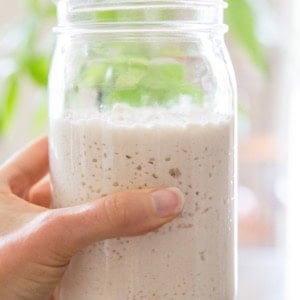
Gluten-Free Sourdough Starter
Ingredients
- 1 cup gluten-free all-purpose flour + more for growing
- 1 cup water + more for growing
Instructions
- Combine 1 cup of gluten-free flour blend with 1 ¼ cups water and stir well until all the clumps are out. Cover with a kitchen towel, and leave untouched overnight (preferably 18 to 24 hours).
- On the second day, discard half of the starter. Add another 1 cup of flour and 1 cup of water. If the starter is very thick like pizza dough, add more water until it is thinner. You want it to be about the consistency of pancake batter. If it is too thin, add more flour (start with 1/4 cup and work up from there).
- Each day, for the next 2 to 5 days, discard half of the starter and add a 1:1 flour to water ratio. This means you can continue adding 1 cup of flour and 1 cup of water, or you can decrease the measurement to ½ cup flour and ½ cup water.
- Keep noting the consistency of the starter and adjust amounts of flour and water as necessary.
- Once your starter shows signs of life (smells like sourdough bread, increases in volume two to fourfold after each feeding and is very bubbly), you can use it in sourdough recipes!
Nutrition
This post contains affiliate links, which means I make a small commission off items you purchase at no additional cost to you.
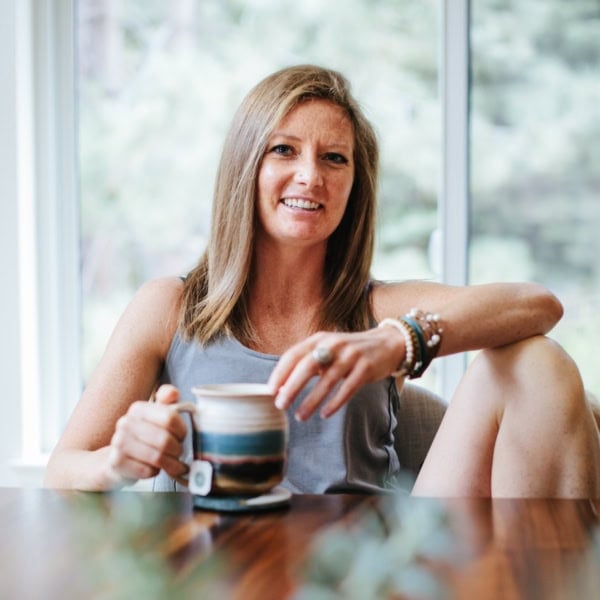
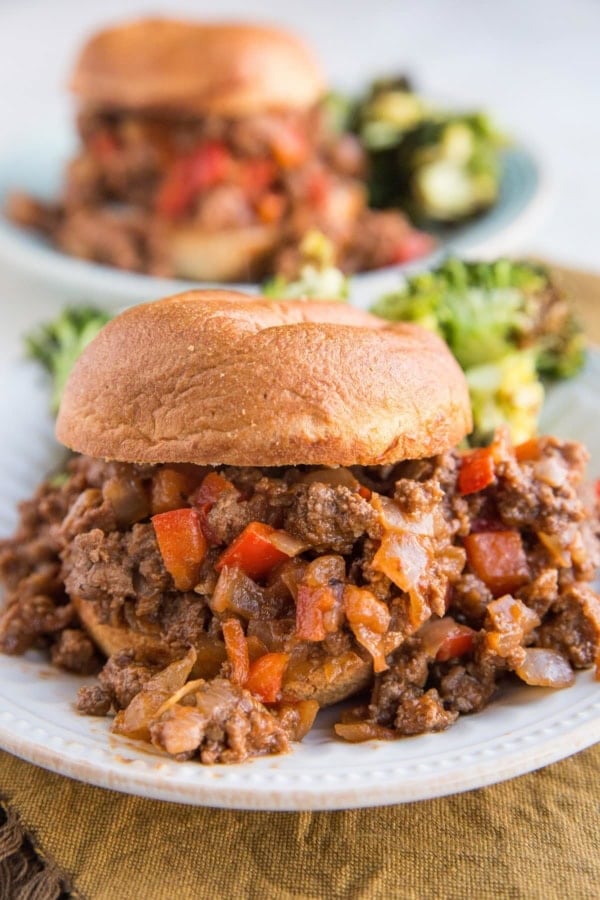
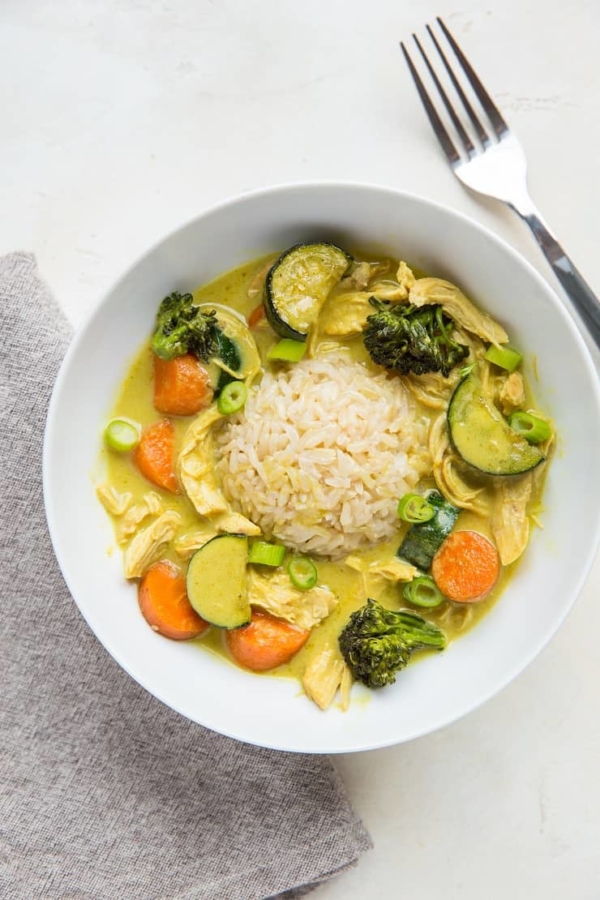
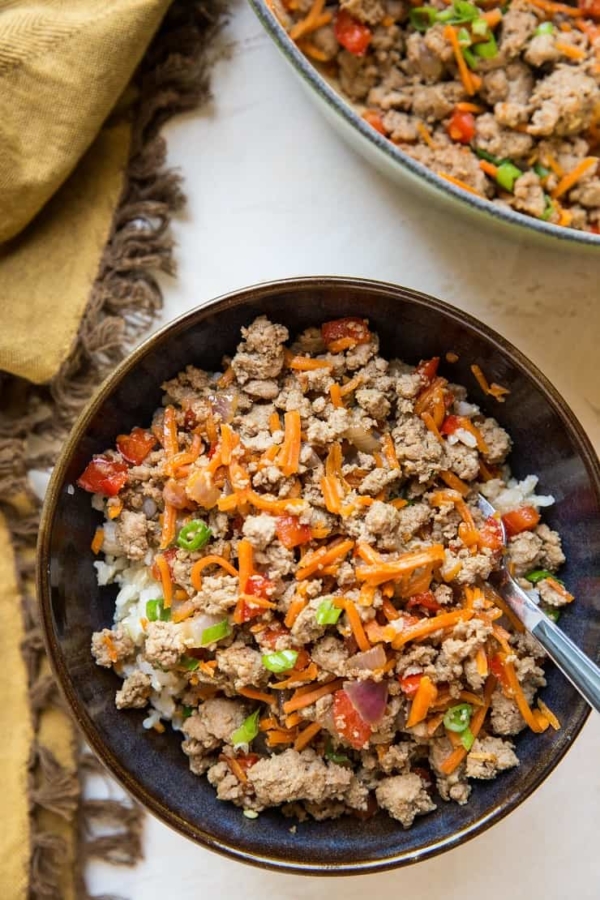
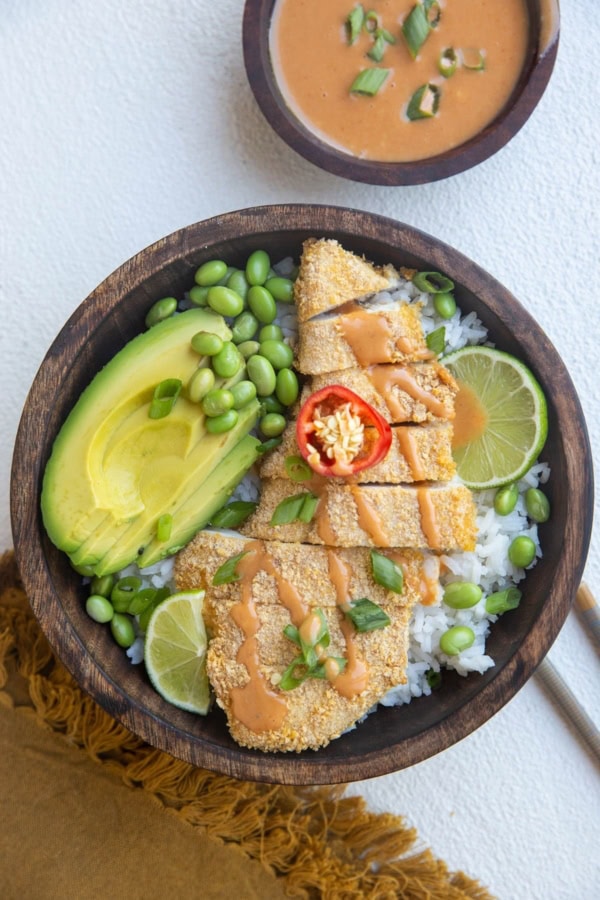









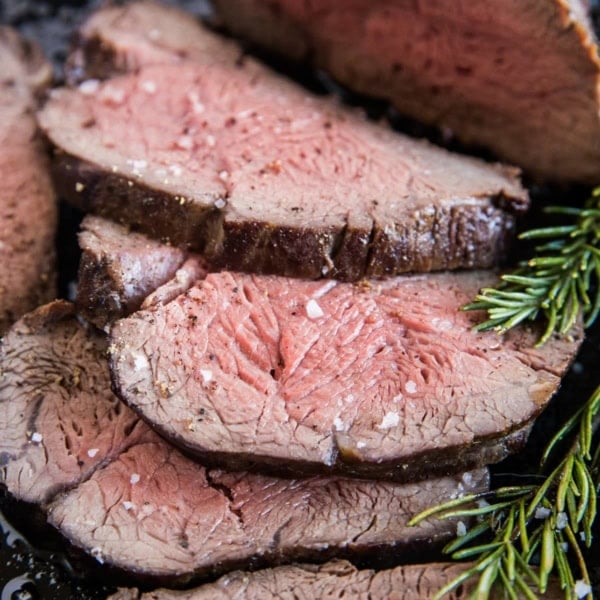
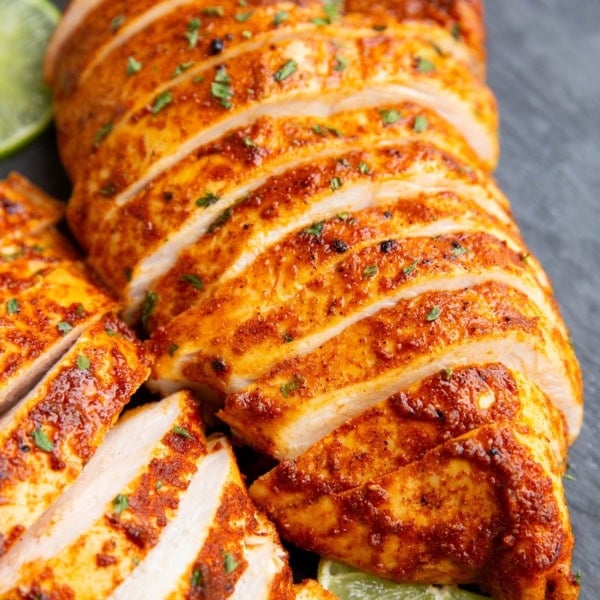
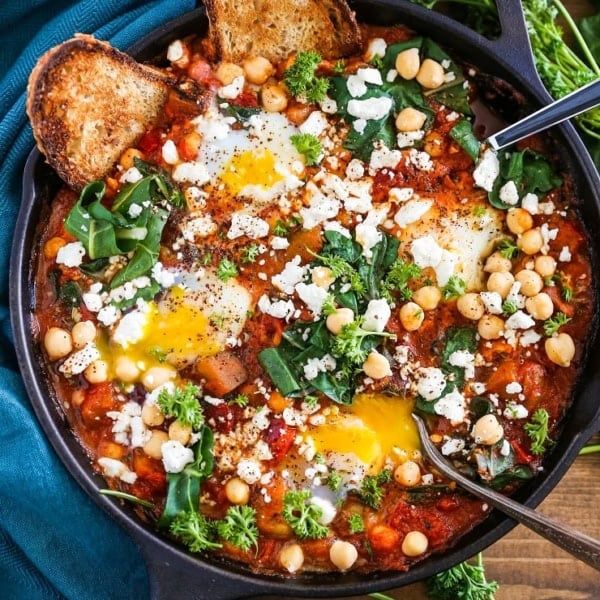
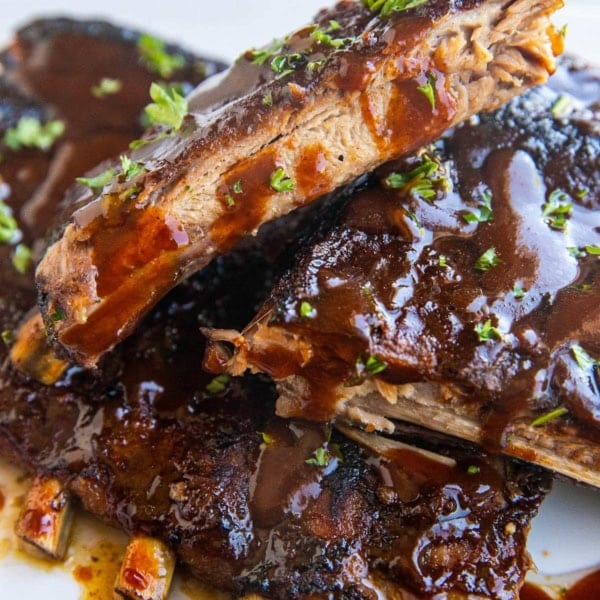

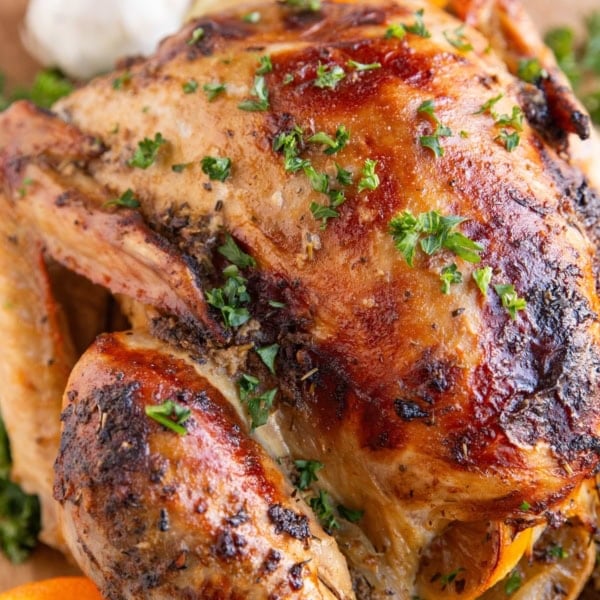
Hi, I’m new to this and found your recipe for the starter! I’m using bobs red mill gluten free flour and I’m on day 3. Yesterday morning it had doubled and smelled sour so I discarded and fed it again and today it didn’t grow at much as was watery. I discarded and fed it agin this morning and now it looks more watery. Wondering what I’m doing wrong. This is my second attempt. The 1st attempt had mold and day 4. Thanks, Anna
Hi Anna! How warm is your home and where are you keeping the sourdough discard?
So just flour and water? No yeast?
Hi Marie! That is correct. Sourdough starter uses native yeast (yeast in the air) to ferment the starter. Let me know if you have any other questions! xo
Hi there!
I am a complete newbie in this sourdough business! Just wondering what size of jar you suggest to use? I have smaller sized ones, but worry they might become too full once the starter starts doubling. Also, say I do start this in a small jar and need to upsize to a bigger jar- would that cause damage to the starter? Sorry if these are silly questions.
Hi Jayden! Welcome to the wonderful world of sourdough! I would recommend using a larger jar (I use 1-quart) because a smaller jar would fill up within a few days. For a mature sourdough starter, moving it wouldn’t make much of a difference but for a young sourdough starter, I would be more cautious to allow the culture to properly grow before trying to transfer it to a different container. Happy fermenting!! xo
If anyone needs their starter super quick, I used Wal-Mart brand gluten free all purpose flour and it almost tripled in size in 2.5 days!
Oooh, great success!! Thanks so much for sharing that, Baylee! xo
My sourdough starter turned out great. I often make regular sourdough bread. The ingredients are 6 cups of bread flour half a cup of sugar half a cup of corn oil, 1 cup water, 1 1/2 cups starter 1 teaspoon of salt then I cover for 12 hours punch down. Put it in three loaf pans for 12 hours, it makes three loaves. I bake it at 325 degrees for 20 to 25 minutes. My question is my gluten-free starter. Do I use the same process as I do regular
Thanks so much for sharing your bread method! This is so helpful to others who want to try the same thing. For gluten-free sourdough bread, you should be able to use the same method minus the punch down. That said, I would follow a recipe that is specific for gluten-free sourdough as these people have fine-tuned and tested their methodology. These two sites have highly rated recipes for gluten-free bread: https://www.bakerita.com/gluten-free-sourdough-bread/ and https://www.whattheforkfoodblog.com/2020/05/17/gluten-free-sourdough-bread-recipe/
Can I use cassava flour as the flour in the sour dough bread starter?
That’s a great question! Without having tested it myself, I can’t be sure. I would think cassava flour would work to grow a starter but because it doesn’t contain a lot of leavening agents the way a gluten-free flour blend does, you may need to make some changes to recipes you make using the cassava flour starter. My guess would be you may need some extra leavening agent, or some added starch. Let me know if you try it! xo
howdy! Once the starter is ready to make bread with, can I use gluten free flour as a substitute? Or should I use regular wheat flour (although that would kinda defeat the purpose of a gf starter)??
Hi Mae! You can use gluten-free flour to make gluten-free sourdough bread 🙂
How do you bake the bread from.this point?
Hi Ashley! I don’t have a recipe on my site for gluten-free sourdough bread but I know there are a great deal of amazing recipes floating around the internet for it! I haven’t tried this one myself but it’s from a blogger who has a great deal of experience baking GF sourdough bread: https://www.bakerita.com/gluten-free-sourdough-bread/ Hope you enjoy!
Instead of having all that discard
couldn’t I just put one tablespoon of flour to one tablespoon of water each day to create my starter?
Hi Kathy! You could try it if you’re up for experimenting. The purpose in the measurements is to have enough discard to use quickly while not depleting the original batch. So the smaller amount would theoretically work but it would take longer.
I’m using Bob’s Red Mill 1:1 ratio GF flour. I’ve started using significantly more water to flour when feeding my starter (on day 4 of trying to make starter). It’s the thickness of thick pancake batter as soon as I stir it in but by the next day it’s thickened up soooo much more that it’s almost congealed. Is this okay? What am I doing wrong if not? I’m starting to smell the sourness but no real bubbles yet
Hi Katherine! It sounds like the starter could use a little more water if it’s almost congealed. The starter is supposed to be thick but also easy to stir. The extra water may help give the bacteria and yeast what it needs to grow some air pockets and thrive. The temperature and humidity of your home plays a role in the amount of water needed and also the amount of time. Let me know if you have any other questions. xo
Hi! So excited to start my bread making journey- gluten free style. Say I don’t have time to use the discards… can I save them in one jar or would have to use them then? Or use a discard to begin a new starter?
Thank you!
Hi Shelby! This is a great question! I’ve never tried this tactic myself, but I think it would work just fine to save the discard in a separate jar and/or use it to start a new starter 🙂 I hope you enjoy all your sourdough adventures! xo
Thank you for this recipe. So mine is growing in double on the 2nd day already. I do notice a distinct smell from it. Not like a sourdough smell. Is this normal during the process?
Thank you
Hi Kasey! Can you describe the smell? If it smells similar to a yeast dough, like pizza dough with a fairly sour aroma, it is totally normal. If it smells at all foul, I would pitch it. In this sense, if the smell isn’t unpleasant, you’re good to go but if it’s rank to sniff at, I would start over. So long as it all smells good, congrats on having such an active starter! Sounds like it’s ready to use! xo
I am beginning to dive into the world of sourdough starters and it seems like such a waste to me to discard half. Is it possible to keep the “discard” and attempt to make another starter? At least with the first discard? Or does it stop growing?
Hi Aly!
The first discard can be used to make another starter, and all of the discard after that is supposed to be put to use. So you aren’t throwing away the discard (unless you don’t have anything you want to make), but rather are using it to bake bread, or make sourdough pancakes, waffles, etc. Hope that makes sense!
@Julia, I think Aly means the discard in the beginning batches before the starter is ready….. at least that’s what I’m guessing. Another commentator asked the same thing….. I could be wrong. The beginning batches you throw the discard away correct…?
Once the starter is ready, you use the discard in whatever recipe you want or share with someone.
Hi K! Yes, the first couple rounds of discard should be tossed because they won’t be very active. Nevertheless, the starter should become active within a few days, so you’re only tossing 1 to 3 batches, depending on how active the starter is. In some cases, this may take more time but I find my starter becomes active within one day so I only toss one round of starter.
Hi Julia
Once you have made your starter you mentioned to store it in the same jar etc What size jar should I use (I assume you mean a mason jar is 32oz too small) and by covering it should you have a tight solid lid or punch holes in it to breathe. I made sourdough as a child, but that was 1/2 a century ago. LOL so starting from scratch in more ways than one. And now need gluten free. I was going to use Robin Hood Gluten Free All Purpose Flour. Will this have the right components to work?
Hi Sheelagh! A 32 ounce jar works great! That’s the size I used to begin my starter as well. I cover it with cheesecloth and bind it with a rubber band. This way, the starter can breath and has access to the native yeast in the air to begin fermentation. I’ve actually never used Robin Hood GF flour, but I just googled the ingredients and it looks great. The only thing I’m unsure of is the exact amount of water to use, so you may need to troubleshoot that based on how dry or wet the starter looks. Hope this helps!
Hi!
I’m new to this and was wondering if it matters the brand of flour I use for the starter versus the mix I use for the actual recipie. For example if I use bobs red mill for my starter but generally use Pamela’s baking mix for my pancakes – is that gonna screw it up? And if I use a bread mix for certain recipies that is different texture wise fro the pancake mix. Hope my question makes sense
Hi Charity! I think I understand what you’re asking! For the starter, I would try to stick with feeding it one flour blend until it has reached a certain level of maturity (say a few months old or so). For any recipe you make using the discard, you can use any flour you like. In that sense, using bob’s for the starter and Pamela’s for pancakes will work great! Let me know if you have any other questions! xoxo
How do n u take the starter and make a loaf of bread? What would the carb count be?
Thanks in advance
kristie
Hi Kristie!
Best solution would be to google a recipe for sourdough bread (I don’t have one) and check out the nutrition facts in the recipe card. Most food sites include the macro breakdown in the recipes 🙂